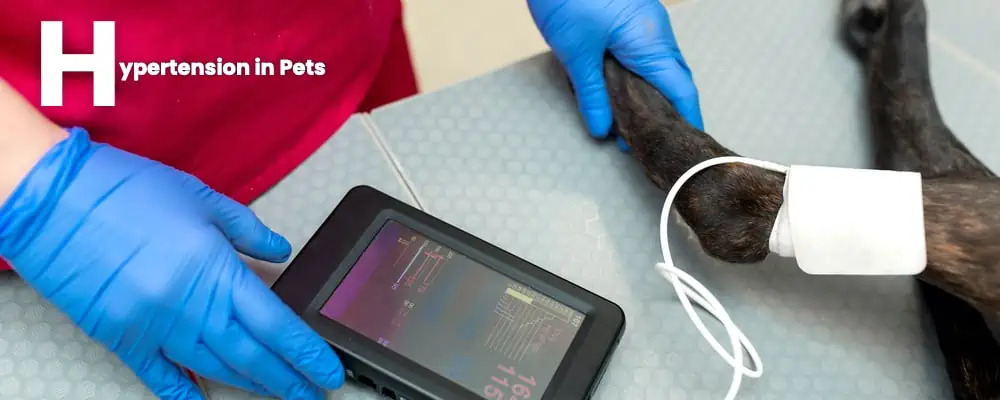
Hypertension (high blood pressure) is relatively common in cats in association with certain underlying systemic diseases. It has the potential to create a severe threat to feline health. The condition can be dangerous in itself, responsible for a variety of disorders adversely affecting, for example, a cat’s eyesight, kidney activity, or cardiac function. Fortunately, with timely and appropriate veterinary monitoring and treatment, feline hypertension—whatever its cause—is almost always manageable.
In humans, blood pressure is usually measured with a cuff, pressure gauge and stethoscope. Two values are taken into account, the higher one being the blood pressure in the arteries that is recorded when the heart beats (systolic pressure), the lower value when the heart rests between beats (diastolic pressure). In cats, the artery is too small to hear with a stethoscope, so a more sensitive instrument, called an Ultrasonic Doppler Flow Detector is used. Also, the diastolic pressure is of little importance in the cat, so usually only the systolic pressure is recorded. Normal human blood pressure is 120/80 mmHg (which stands for millimeters of mercury), while in cats, normal systolic blood pressure is typically higher than that, up to 180 mmHg.
In rare cases, a cat’s elevated blood pressure has no discernible cause. This is known as primary—or “essential”—hypertension. Although primary hypertension is commonly diagnosed in humans, it is relatively rare in cats. On the other hand, veterinarians frequently diagnose “secondary” hypertension, which is a consequence of an underlying primary disease. Occasionally, the condition can stem from the presence of a heart ailment or a tumor that is producing excessive amounts of corticosteroids or of certain hormones, such as epinephrine. It is also possible for some medications to cause a temporary rise in a cat’s blood pressure. But in the great majority of cases, secondary feline hypertension is a consequence of kidney disease, hyperthyroidism or diabetes. There is no recognized predisposition for feline hypertension in terms of gender or breed, but an animal’s age does seem to be relevant. That is, the risk for hypertension rises as a cat grows older.
Cats with advanced hypertension will typically exhibit problems associated with the systems that are affected by the condition: the ocular system (sudden blindness or retinal hemorrhaging); the renal system (poor appetite, weight loss, increased drinking and urination); the neurologic system (seizures, disorientation); and the cardiovascular system (difficulty in breathing).
Animal Medical Clinic advises cat owners to have their animals undergo veterinary evaluations at least once a year, and more often if there are significant chronic disease conditions. That evaluation should include blood pressure measurement at least once a year on cats with heart or kidney disease so that problems such hypertension can be identified early and appropriate therapy can be initiated. When a cat is diagnosed with hypertension, thorough bloodwork will be done in an effort to identify the cause. Treatment for the condition currently centers on two types of medications: calcium channel blockers (such as amlodipine) and angiotensin-converting enzyme (ACE) inhibitors (such as benazepril), both of which work by relaxing and dilating an animal’s blood vessels. With these medications, feline hypertension is frequently controllable and even reversible, especially when the underlying disease is successfully treated.



